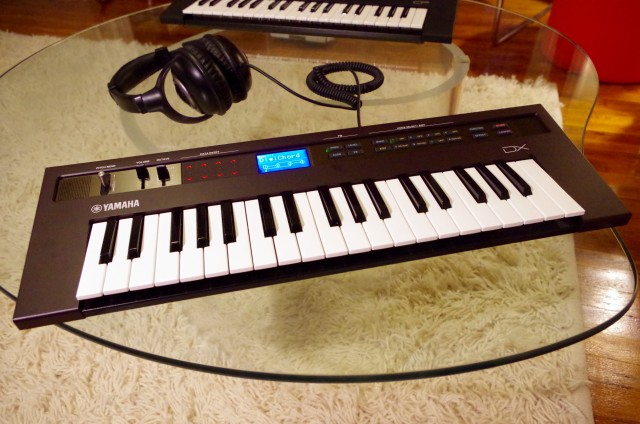
The latest in Markus Fuller’s series of teardown videos takes a look at the inside of a Yamaha Reface DX:
In the video, Fuller explores the guts of the Reface DX and makes some comparisons to the Reface YC organ.

The latest in Markus Fuller’s series of teardown videos takes a look at the inside of a Yamaha Reface DX:
In the video, Fuller explores the guts of the Reface DX and makes some comparisons to the Reface YC organ.

I expected there to be a lot of FM inside but there wasn’t.
That’s because this was filmed in the AM.
Wanna hear it…don’t care what’s inside.
Don’t watch a teardown video then.
Fried Mozzarella?
Immediately from the announcement it was pretty obvious that all these synths would use the same hardware, with just a different control interface attached. Over the weekend a link was making the rounds showing a DIY 8-voice FM synth using a three-dollar microcontroller, you’d be stupid not to do it in software these days.
Wasn’t it always in software (for the DX series)? Honest question.
“Wasn’t it always in software (for the DX series)?”
Not exactly. The original DX instruments used completely custom digital chips that implemented the FM algorithms in a pipeline. These were digital but were not general purpose computing devices and didn’t run software. There were two, the EGS chip did nothing but generate envelope data which was then streamed to the OPS chip. The OPS chip was a single-purpose digital signal generator which did the FM calculations.
These two chips were controlled by control signals coming from software running on a separate CPU. There was a “Sub-CPU” microcontroller to deal with keyboard and button scanning and MIDI handling, and another “Main” microcontroller that implemented the user interface and adjusted the control registers in the FM chip. These sorts of microcontrollers which handle MIDI, key scanning, the user interface, and to generate some control signals, are also present on most analog synthesizers as well, and are different from the issue of the signal path.
A notable difference between a pure digital signal generator and software synthesis is that software synthesis uses buffers and has more latency. Direct signal generation from an analog circuit or a custom digital hardware engine is more responsive as the sound appears instantly in the case of analog and after a couple of samples delay in the case of digital engines. This approach often feels more responsive and snappy.
Holy awesome answer, Batman! Thanks very much RapidBat.
“Immediately from the announcement it was pretty obvious that all these synths would use the same hardware, with just a different control interface attached.”
You didn’t even watch the video, dude!
Markus addresses that and they don’t use the same hardware internally.
Two thumbs up for Yamaha too, Full MIDI CC & Sysex implementation and documentation for all 4 models. Roland are you listening ? (Boutique, System1, etc…). Hate the mini keys. Hope to see a “REFACE 4M” All 4 in a module version.
“A different processor board in each one”
That would go to explain why the Reface series are pricier than say, the Roland Boutique range.